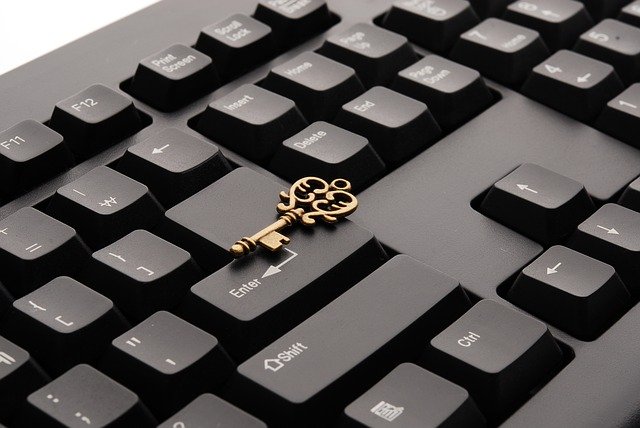How to clean keyboard without compressed air
Cleaning your laptop keyboard on a regular basis is a good idea. However, when cleaning the keys or removing dust and debris, there are a few things to bear in mind to avoid hurting it.
You can clean your laptop keyboard with a vacuum once in a while. Use the little brush or the upholstery-cleaning attachment on the small portable vacuums. This effectively suffocates the keyboard’s filth. It’s awe-inspiring to watch.
Some people prefer to clean their keyboards with compressed air from a can. This is not a good idea because the air can blow the filth from your keyboard deeper into your laptop. Use a vacuum instead.
Isopropyl alcohol can be used to clean the tops of the keys. Soak it up in a soft, dust-free towel, or gently massage the key tops with a cotton swab. Never use a spray cleaner directly on the keyboard, and avoid dripping alcohol into the keyboard.
Along with cleaning your keyboard on a regular basis, you should also wash your hands from time to time.
- Turn off the computer and unplug all of the cords.
Before cleaning the keyboard, turn off your computer to avoid causing damage to your hardware. Remove the plug connecting your keyboard to the computer if it is wired. Disconnect your computer’s power cable if you can’t remove the keyboard, such as when cleaning a laptop, to avoid electrical shock.
- Unplug USB keyboards before shutting down the computer. If you’re unsure, always shut down the computer first before doing this with a non-USB keyboard.
- Remove the batteries from wireless keyboards, especially if you plan to clean the keys thoroughly.
- Shake out any loose material by turning the keyboard upside down
- Remove as much loose material as possible by flipping your keyboard. When shaking the keyboard, be gently? Food crumbs, dirt, pet hair, and other particles will come out almost quickly. To drive out any lingering debris, tilt the keyboard in different ways and tap it a little harder.
- Listen for the sound of particles inside the keyboard banging about. Mechanical keyboards and other devices with elevated keys are prone to this. Consider dismantling the keyboard to give it a thorough cleaning. To remove debris from between the keys, you might use a cleaning gel product. These goods have a slimy (though somewhat firm) consistency and can be pulled off the keyboard. Any loose material will stick to the slime when you pull the product off. Before purchasing a keyboard cleaning gel, make sure to check the reviews for each product to avoid purchasing a dud.
- If you’re cleaning a laptop, keep the screen open while using your other hand to support the computer’s base.
- Blow dust and dirt out of the keys with compressed air.
Hold the canister at a 45-degree angle while pointing it at the keys after attaching the plastic straw to the nozzle. Sweep the nozzle across the keyboard in a left-right motion, using controlled bursts of air. Always keep the nozzle 12 in (1.3 cm) above the keyboard.
- Blow at the keyboard from various angles to completely clean it. Start with it facing you, then rotate it to either side.
- Holding a laptop or membrane keyboard while blowing it out is a good way to clean it. Maintain a 75-degree angle so that it isn’t fully upright.
- Sweep up hard-to-remove material using a dust vacuum
- The suction force of a dust vacuum removes the majority of the stubborn rubbish lodged between the keys. Use an ordinary vacuum with a brush attachment if you don’t have a dust vacuum with a hose. Examine the entire keyboard, paying special attention to the areas around the keys.
- Check that none of your keys are loose, especially if you’re using a laptop. If a key breaks loose, remove it from the vacuum, wash it, and replace it. To re-bind it to the keyboard, place it over the key stem or use a clip.
- Use a cotton swab dipped in isopropyl alcohol to clean around the keys.
To avoid getting too much moisture behind the keys, softly dampen the cotton swab. Wipe away any remaining dust, oils, or filth from each individual key. Clean the sides of each key and the space around it as needed by repeating this process. Swap swabs out as they become soiled. Alcohol can remove the letters, numbers, and symbols printed on each key, so stay clear from it.
- Because isopropyl alcohol dries rapidly, it’s a better choice than water. It’s available at most drugstores and supermarkets.
- Another way to clean a knife is to wrap it in a microfiber towel. Wet it with isopropyl alcohol and press it into the grooves of the keyboard. This is most effective with mechanical keyboards that have elevated keys.
- When using a laptop, exercise caution. Isopropyl alcohol is still an excellent cleaning solution, but the laptop’s fragile electronics is located directly beneath the keyboard. Allow no moisture to collect behind the keys.
- Scrub the keyboard with an isopropyl alcohol-soaked towel.
To avoid adding additional particles, use a lint-free cloth or paper towel—a microfiber screen-cleaning cloth or eyeglass cloth is a wonderful alternative. Make sure the towel isn’t dripping once it’s been dampened. To remove any leftover dust or debris, wipe the top portion of each key. Alcohol can remove the print from each key, so don’t scrub too hard.
- Keep an eye out for keys that are often used, such as the space bar and enter key. These areas have a higher level of filth. It’s possible that you’ll have to scrape them several times to get them clean.
- Use a toothpick to break through the crud in particularly filthy areas. To dislodge the filth, place the toothpick almost flat against the key and rub it. Isopropyl alcohol should be used to scrub away the rest.

